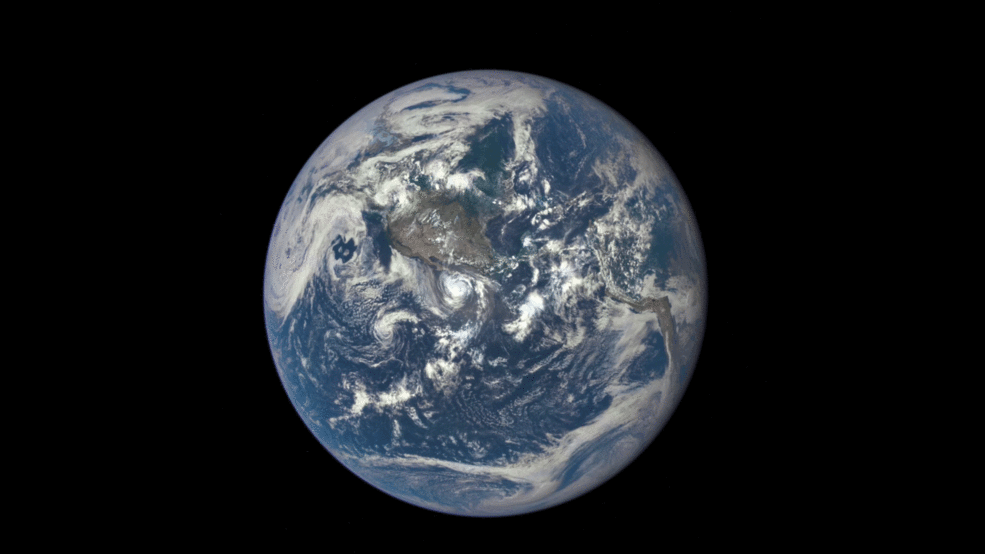Weird picture shows dark side of the moon from Nasa's DSCOVR satellite
The dark side of the Moon has been revealed in a Nasa image, showing it as it moves in front of the sunlit side of Earth. The image was taken by a camera on board the Deep Space Climate Observatory (DSCOVR) satellite – orbiting the Earth from a million miles away – and shows the side of the Moon usually never visible from our planet. The other side of the Moon always faces Earth because it is tidally locked to the planet – its orbital period being the same as its rotation on its axis.
Scientists first saw the far side of the Moon in 1959 when the Soviet Luna 3 spacecraft returned images. Since then it has been studied in great detail. The latest Nasa images, taken on 16 July 2015, show the Moon passing over the Pacific Ocean near North America. DSCOVR's Earth Polychromatic Imaging Camera (EPIC), which was used to capture the image, typically provides scientific observations of the Earth's ozone layer, vegetation, aerosols in the atmosphere and cloud height.

Its 'natural colour' images of Earth are created by combining three separate monochrome exposures taken in quick succession. Explaining how the latest images were taken, a statement from Nasa said: "Combining three images taken about 30 seconds apart as the moon moves produces a slight but noticeable camera artefact on the right side of the Moon. Because the moon has moved in relation to the Earth between the time the first (red) and last (green) exposures were made, a thin green offset appears on the right side of the moon when the three exposures are combined. This natural lunar movement also produces a slight red and blue offset on the left side of the moon in these unaltered images."
Adam Szabo, DSCOVR project scientist at NASA's Goddard Space Flight Centre, added: "It is surprising how much brighter Earth is than the Moon. Our planet is a truly brilliant object in dark space compared to the lunar surface."
© Copyright IBTimes 2025. All rights reserved.






















